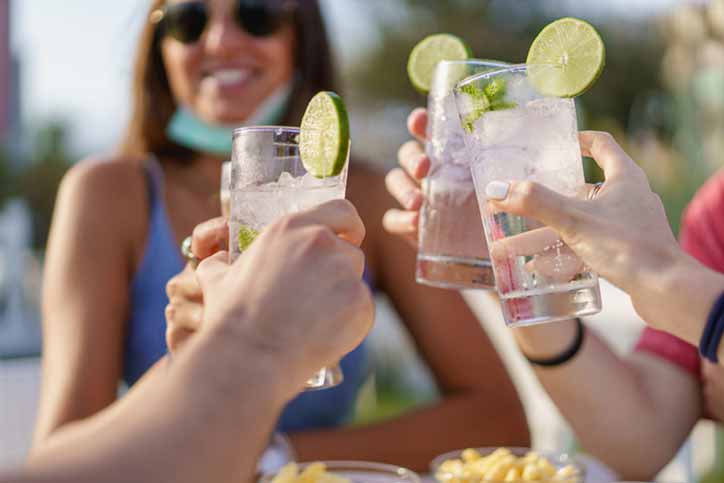I was recently at a restaurant and was skimming their drink menu when I came across a special section of mocktails; non-alcoholic cocktails. While I am aware that restaurants often have alcohol-free cocktail options, such as your classic Shirley Temple, this specific menu felt novel. In fact, it boasted that their mocktails were constructed using the first ever distilled non-alcoholic spirits! I drew an assumption that this was perhaps a marketing technique meant to target a growing population of individuals that are choosing to go alcohol-free for health purposes, but still want to have a “drink” at happy hour or with dinner.
You may have recently seen news coverage about the sober living movement, or as author Ruby Warrington has coined it, the “sober curious” movement. Simply put, this movement is about individuals reconsidering their drinking habits to attain optimal health and wellness. Before dismissing this movement as a fad, it appears that it has gained popularity and may have longevity. There has been an increased demand for alcohol-free cocktails and beers. Sober bars, establishments with zero alcohol, have popped up across the U.S.
This leaves us wondering, “do I need to quit drinking to live a healthy lifestyle?” To explore this question, we must first look at the research regarding alcohol use and health.
We have learned from research that excessive drinking can cause a myriad of short-term and long-term health risks; including motor vehicle accidents, risky sexual behavior, heart disease, and liver cancer. Studies have also suggested that practicing moderate drinking can provide certain health benefits, but these findings could be related to additional interacting factors (e.g. health behaviors, genetics). A recent eye-catching study published in The Lancet analyzed alcohol use and its health effects in 195 countries and territories from 1990-2016. Researchers utilized 694 data sources, along with 592 prospective and retrospective studies.
Findings indicated that the risk of all-cause mortality rises with increases in alcohol consumption. They also concluded that the safest amount of alcoholic drinks consumed to reduce health risks is zero. While these findings are significant, the current recommended drinking guidelines do allow for some alcohol consumption. The U.S. Department of Health and Human Services and U.S. Department of Agriculture recommend moderate drinking for current drinkers; defined as no more than one drink daily for women and two drinks daily for men. They also note that non-drinkers should not start drinking for any reason.
The sober living movement is a great option that works for some people, but it may not be for you. That’s OK! If you want to make strides towards optimal health and wellness and are a current drinker, we recommend you stay within moderate drinking levels using the following tips:
1. Make a drinking plan
Make a plan as to how much alcohol you will drink over the evening or at the event. Stay aware of just how much you are drinking and keep your limit in mind.
2. Alternate with non-alcoholic drinks.
When you’re out drinking, alternate non-alcoholic drinks with alcoholic ones and switch to non-alcoholic drinks altogether when you feel like you’ve reached your limit.
3. Eat while your drink.
Don’t drink on an empty stomach; instead, eat before or while you drink. Food helps to absorb the alcohol and will minimize the negative effects of alcohol.
4. Order by the glass and not by the pitcher or bucket.
Order drinks by the glass, not by the pitcher or bottle. It’s easier to keep track this way and will be less tempting to over-indulge.
5. Make a drink last.
Drink slowly and concentrate on the food, people, and activities around you.

